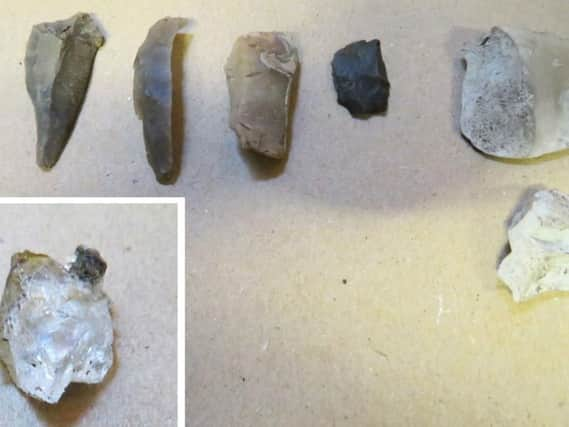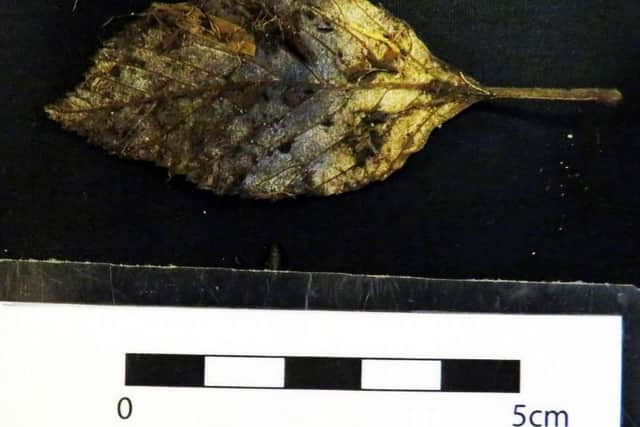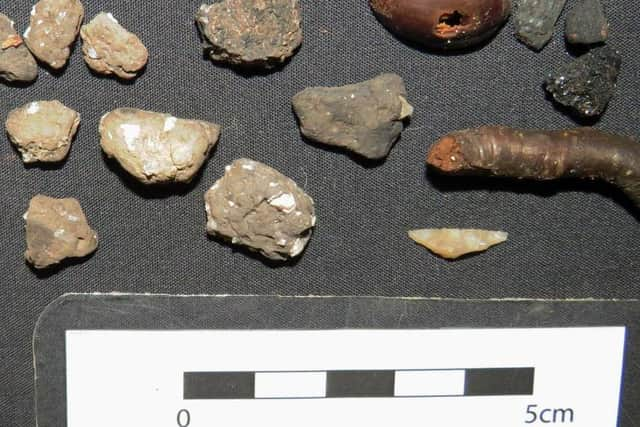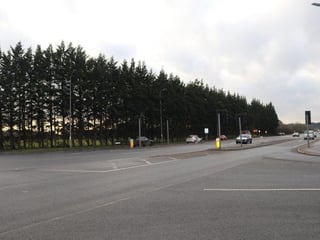This 6,000-year-old leaf was found in the spot a new £100m bypass could soon be built near Poulton


But that’s nothing compared to this elm tree leaf which lay undisturbed for 6,000 years before being uncovered during work to build a new bypass near Poulton.
They will now go on display as part of Highways England’s efforts to keep residents updated on the work so far.


Advertisement
Hide AdAdvertisement
Hide AdLead archaeologist Fraser Brown, of Oxford Archaeology, which was working on the site last year, said the finds were regionally, if not nationally, significant.
“We have found extensive deposits of peat and marine clays which have helped preserve ancient plant remains and which yield information on the local vegetation, water, climate, and human activity, ” he added.
“We’ve also found pottery, stone tools and charred remains providing direct evidence for Mesolithic hunter-gatherers foraging, and possibly camping, at the water’s edge and later on, Neolithic and Bronze Age farmers living on the fringes of a salt marsh.”
The archaeological finds unearthed from peat and clay left from the Mesolithic, Neolithic and Bronzes ages - dating back between 5,000 and 14,000 years - include ancient pollen, wood, leaves, hazelnuts, charred seeds and fruits giving clues to the natural history of the area and how people lived and developed from hunter gatherers living on the coast to early farmers eking a living from salt marshes.


Advertisement
Hide AdAdvertisement
Hide AdThey will feature at public information events for the project on March 6, from 12.30 to 8pm, at Wyre Civic Centre, Breck Road, and March 7, from 10am to 6pm, at Singleton Village Hall, on Station Road.
The Planning Inspectorate is expected to announce in April whether the new three-mile dual carriageway can go ahead.
